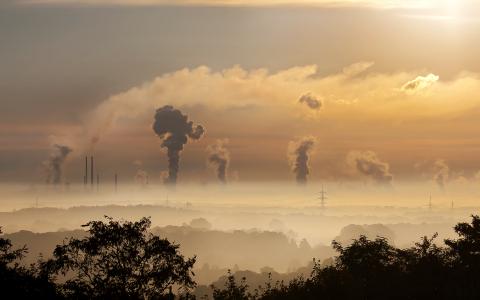
(OilPrice.com) - Two recent reports warned that oil and gas production needs to be significantly reduced if the world is to meet the Paris Agreement goals and curb the effects of climate change. They add to a growing body of research calling on Big Oil to stop pumping. But Big Oil seems to be doing the opposite.
At the beginning of September, Italy's Eni—one of the most ambitious oil majors when it comes to emission reduction commitments—announced a new oil discovery offshore Ivory Coast. The company estimated the potential reserves of the new discovery at between .5 billion and 2 billion barrels of crude and 1.8-2.4 trillion cubic feet of natural gas.
Last week, Exxon reported yet another discovery off the coast of Guyana - its twentieth in the Stabroek block. It adds to reserves already estimated at 9 billion barrels of crude, which the Guyanese government plans to exploit to the best of its abilities.
Meanwhile, a report from University College London has warned that the oil industry must start cutting production at a rate of 3 percent annually by 2050 to meet the 1.5-degree Celsius target of the Paris Agreement, which is the more ambitious scenario of the agreement. This, according to the researchers led by environmental and energy economist Dan Welsby, means some 60 percent of global oil reserves, along with 90 percent of coal reserves, need to remain in the ground.
Another report, by Carbon Tracker, calls on oil companies to plan for a future where demand will be much lower. So much lower, in fact, that they needed to plan for 50-percent lower output over the next decade or so if they really want to take part in efforts to curb the rise of global temperatures to 1.5 degrees Celsius above pre-industrial times.
"Oil and gas companies are betting against the success of global efforts to tackle climate change," one of the authors of the report, Carbon Tracker's head of oil, gas, and mining, Mike Coffin, said. He couldn't have put it better, and while it is not news that the interests of the oil and gas industry are at odds with a lot of climate change efforts, there is more than one reason for this.
Consider another recent news report. Canada's Enbridge paid $3 billion for Moda Midstream Operating, a company that owns the biggest oil export terminal in the United States, the Ingleside Energy Center in Corpus Christi, Texas, to be renamed Enbridge Ingleside Energy Center (EIEC).
"EIEC's highly advantaged outer harbor location, with direct connection to low-cost, long-lived supply, combined with VLCC capability and rapid loading rates, position it as one of the most competitive export facilities globally," Enbridge said.
The deal comes at a time when the United States is making a mad rush for climate change legislation to catch up with Europe, and this rush is largely unfavorable for the oil industry. And yet, Enbridge is betting big on the continued demand for U.S. oil globally.
The reason: oil demand outlook.
Oil demand, which stunned the energy world last year, sending Big Oil reeling and many small companies sinking, is back with a vengeance, exceeding all expectations, some of which predicted that the shift to renewables would kill oil demand growth pretty soon. It now appears these predictions were premature.
It is because of this demand outlook that Big Oil is risking, as the Carbon Trackers report notes, up to a trillion dollars worth of oil and gas projects that will not be competitive in a low-carbon world. Because this low-carbon world is quite uncertain, even with all the legislation and the support of asset managers with trillions of dollars in assets.
Last week, record-high gas prices and low wind speeds, which together served as an unpleasant surprise for the UK grid, forced National Grid ESO to fire up a coal plant. The portion of energy the plant supplied was minuscule, at 3 percent, but the fact remains that one of the most ambitious emission cutters in the world was forced to resort to dirty coal because less dirty gas was too expensive, and green wind fell too short because of the weather.
Meanwhile, the same record-high gas prices and low wind speeds are causing protests in parts of Europe as electricity bills swell. With gas, it's about a shortage that was the result of a rare combination of events, including a prolonged winter and a strong rebound in economic activity in Asia, which has been gobbling up more LNG cargos. With wind, it's the weather. It may well be the case that Big Oil continues with its business as usual in anticipation of more such discrepancies between energy demand and supply.
French TotalEnergies, the latest oil major to rebrand itself away from its core business, earlier this month announced a $27-billion investment in Iraq over the next 15 years. The money will go towards boosting the rate of oil recovery at several southern fields, reducing gas flaring to use the gas for local power generation, and building a solar farm. Some might call this greenwashing. Others would call it hard cold reality, where people need energy, and getting it on a consistent, reliable basis trumps its emission footprint.
By Irina Slav for Oilprice.com
OilPrice.com



